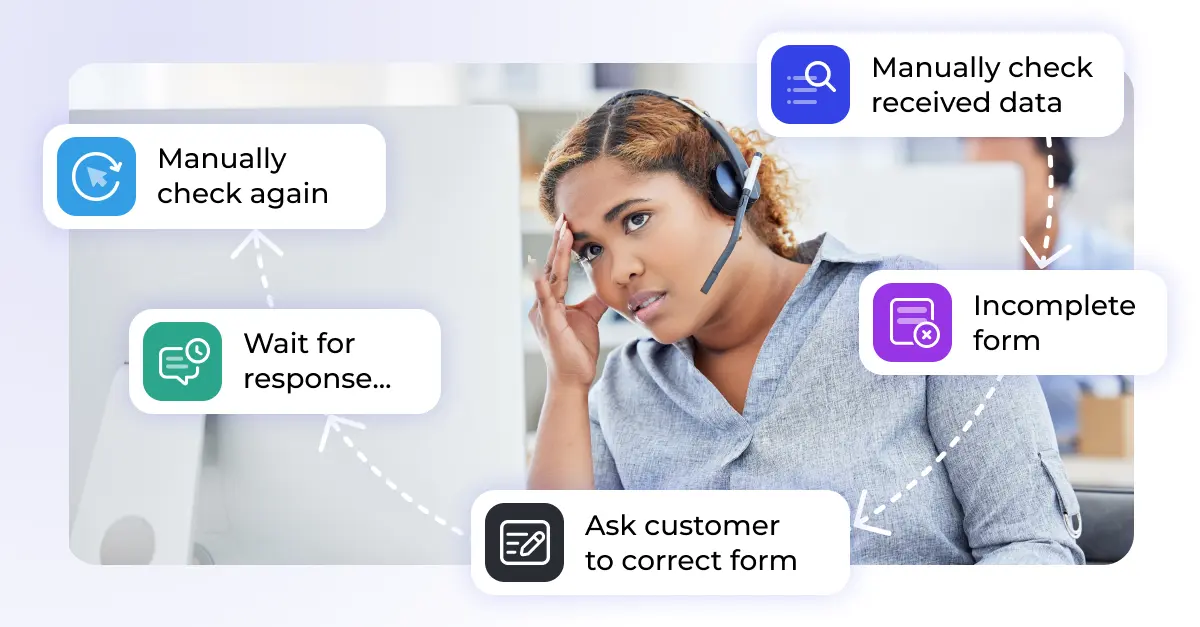Your customer support team is more than just a group of problem-solvers. They’re the voice of your brand, the front line of customer experience, and often the deciding factor in whether a client stays loyal or looks elsewhere. Measuring customer support is not just a check-the-box exercise—it’s a critical strategy to strengthen relationships, build trust, and drive long-term growth.
If you’ve ever felt like your team isn’t quite hitting the mark, don’t worry—you’re not alone. Many businesses struggle with aligning customer service with their broader goals. That’s why we’re here: to show you how to define success, track performance, and turn your support team into a competitive advantage.
What sets the best customer support teams apart?
Not all customer support teams are created equal, but the best ones have a few key traits in common. These aren’t just nice-to-haves; they’re non-negotiables for success.
- Clear, compassionate communication
Great customer service starts with clarity. Your team needs to convey information concisely while showing empathy. Clients should walk away feeling heard and understood, not overwhelmed by jargon. - Empathy that builds trust
Emotional intelligence is the secret weapon of every high-performing team. It’s not just about solving problems—it’s about making customers feel valued while you do it. - Deep knowledge, always up-to-date
No one expects your team to know everything, but they should know enough to provide confident, accurate answers. Regular training ensures your team is always ready for the next question. - Quick thinking and creative problem-solving
Whether it’s an unusual product issue or a time-sensitive client request, your team’s ability to think on their feet can make all the difference. - Adaptability in any situation
Customers don’t come in one-size-fits-all. The best teams can pivot their approach depending on the situation—whether they’re dealing with a detail-oriented procurement officer or a CEO who just wants results.

How to build (and sustain) a great support team
Creating a standout customer support team isn’t about luck—it’s about strategy. Here’s how you can make it happen:
1. Set clear, meaningful goals
Success starts with clarity. Without clear goals, your team is just putting out fires instead of building something bigger. Start with objectives that align with your company’s broader vision:
- Customer satisfaction: increase positive feedback by a specific percentage or decrease complaints within a set timeframe. Read about how customer feedback can enhance customer experiences.
- Faster responses: set benchmarks for how quickly your team should respond to tickets, whether it’s a 2-hour email reply or a 3-minute chat resolution.
- Service Level Agreements (SLAs): define what success looks like for response times, resolution times, and quality standards—and make sure everyone knows the targets.

2. Prioritize training and growth
A knowledgeable team is a confident team. Invest in:
- Continuous learning: keep your team up to date on product changes, new processes, and industry trends.
- Soft skills development: build their capacity for empathy, negotiation, and conflict resolution.
- Tool training: familiarize them with the latest CRM systems, automation tools, and analytics platforms to make their work smoother.
3. Streamline processes to boost efficiency
Efficiency isn’t about rushing; it’s about working smarter. Look at metrics like First Contact Resolution (FCR) and Average Handle Time (AHT) to identify bottlenecks and improve workflows. Give your team the tools they need to streamline repetitive tasks so they can focus on what really matters: the customer.

The KPIs that matter: measuring success
When it comes to measuring customer support, not all metrics are created equal. Here are the ones that actually matter for B2B success:
1. Customer Satisfaction Score (CSAT)
CSAT is a widely used KPI that measures the satisfaction level of customers after interacting with your team. Typically collected through post-interaction surveys or feedback forms, CSAT allows customers to define their experience in numbers, using a common scale from 1 to 5 or 1 to 10.
To calculate CSAT, divide the total number of positive feedback responses by the total number of customer satisfaction survey responses and multiply by 100. This provides you with a percentage representing customer satisfaction.
2. Net Promoter Score (NPS)
NPS assesses customer loyalty and the likelihood of customers recommending your business to others. In this survey, only one question is asked, and that is how likely are the customers to recommend your company to friends and colleagues. Customer responses are then ordered into three groups:
- Promoters (scores 9-10),
- Passives (scores 7-8), and
- Detractors (scores 0-6).
You can calculate NPS by subtracting the percentage of Detractors from the percentage of Promoters. NPS scores can range from -100 to 100, with higher scores indicating more positive customer sentiment.

3. First Contact Resolution (FCR)
FCR evaluates the percentage of customer issues resolved during the first interaction without requiring follow-up. A high FCR rate is indicative of efficient problem-solving skills and a better customer experience.
Divide the count of issues resolved on the initial contact by the total number of reported issues, and then multiply the result by 100. And that’s how you calculate the FCR.
4. Customer retention rate
Customer retention rate measures the percentage of customers who continue to do business with your company over a specific period. It is an essential KPI that reflects customer loyalty and the success of your customer service efforts.
You can calculate the customer retention rate by dividing the number of customers at the end of a specific period by the number of customers at the beginning of that period and then multiplying the result by 100.
5. Average Handle Time (AHT)
AHT measures the average duration taken by your customer service representatives to handle customer interaction. It includes the time spent on calls, email, chat, or any other communication channel. A lower AHT indicates that your team is resolving issues quickly and efficiently, leading to higher customer satisfaction.
6. Customer Effort Score (CES)
CES measures the ease of a customer’s experience when dealing with your customer service team. Customers are asked to rate how much effort they had to put into resolving their issue or completing a transaction. This can be measured using a scale, such as “Very Easy” to “Very Difficult.” A higher CES score indicates that customers find it easier to interact with your team, thereby enhancing customer satisfaction.

Why measuring customer support isn’t optional
Measurement is the bridge between “good” and “great.” According to a PwC report, 73% of customers say a great experience is critical to their loyalty. For B2B businesses, where relationships are often complex and high-stakes, every interaction matters.
By tracking KPIs like CSAT, NPS, and AHT, you gain actionable insights into what’s working and what needs improvement. The goal isn’t just to gather data—it’s to use it to create better experiences for your customers and stronger results for your business.
Tools to make it easier
If you’re serious about measuring and improving customer support, technology is your ally. Platforms like Zendesk make it easy to track KPIs, manage tickets, and automate repetitive tasks. And if you want to take it a step further, Knots apps and middleware can help you dig even deeper into your data, enabling smarter decision-making and better results.








